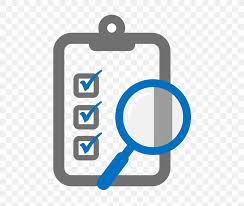Unlocking Organic Growth: 15 On-Page SEO Strategies for Website Success
In today's competitive digital landscape, a robust online presence is paramount. Organic traffic, driven by effective search engine optimization (SEO), is the lifeblood of many successful websites. While off-page SEO plays a significant role, mastering on-page optimization is the foundation for achieving high search engine rankings and attracting targeted visitors. This comprehensive guide outlines fifteen proven on-page SEO strategies to elevate your website's performance and drive measurable results.
- Keyword Research: The Cornerstone of SEO: Begin with meticulous keyword research to identify the terms and phrases your target audience uses when searching online. Leverage tools like Google Keyword Planner, Ahrefs, or SEMrush to uncover high-volume, low-competition keywords relevant to your business. Understanding search intent is crucial – are users seeking information, products, or services? Tailor your keyword strategy accordingly.
- Compelling Title Tags: The First Impression: Craft concise, compelling title tags for every page. These are the headlines search engines display in search results. Include your primary keyword naturally, ensuring accuracy and relevance to the page's content. Aim for around 60 characters to avoid truncation.
- Captivating Meta Descriptions: Driving Click-Through Rates: Meta descriptions are the short snippets of text displayed under title tags in search results. Write unique, engaging meta descriptions that entice users to click. Highlight key benefits and include relevant keywords to improve click-through rates (CTR).
- Clean and Keyword-Rich URLs: Guiding Users and Search Engines: Create user-friendly URLs that are both readable and search engine-friendly. Incorporate relevant keywords, but avoid excessive length or confusing characters. A clean URL structure improves both user experience and search engine crawlability.
- Header Tags (H1-H6): Structuring Content for Clarity and SEO: Use header tags (H1, H2, H3, etc.) to organize your content logically. The H1 tag is typically your main heading, while subsequent headers break down the content into digestible sections. Incorporate relevant keywords into your headers to reinforce your page's topic to search engines.
- Image Optimization: Enhancing Visual Appeal and SEO: Optimize images for both visual appeal and search engine indexing. Compress images to reduce page load times, use descriptive file names that include relevant keywords, and always include alt text. Alt text provides context for search engines and assistive technologies, improving accessibility.
- Site Speed Optimization: The User Experience Factor: Page speed significantly impacts user experience and search rankings. Optimize your website's loading speed by minifying CSS and JavaScript, leveraging browser caching, and utilizing a Content Delivery Network (CDN) if necessary. Tools like Google PageSpeed Insights can help identify areas for improvement.
- Mobile-First Indexing: Catering to the Mobile User: With the prevalence of mobile browsing, a responsive and mobile-friendly design is non-negotiable. Ensure your website adapts seamlessly to various screen sizes and devices. Utilize Google's Mobile-Friendly Test tool to validate your site's mobile responsiveness.
- High-Quality Content: The Foundation of Organic Success: Create engaging, valuable, and informative content that meets your audience's needs. Incorporate keywords naturally throughout your content, but avoid keyword stuffing, which can harm your rankings. Focus on providing real value to your users.
- Strategic Internal Linking: Guiding Users and Improving SEO: Implement an effective internal linking strategy to guide users through your website and enhance search engine crawlability. Link to relevant pages within your site, improving navigation and distributing link equity.
- Schema Markup: Enhancing Search Engine Understanding: Implement schema markup to provide search engines with structured data about your content. This helps search engines understand your content more accurately, leading to richer, more informative search results snippets.
- Intuitive Navigation: Guiding Users to Their Destination: A clear and intuitive navigation structure is crucial for both users and search engines. Make it easy for users to find what they need; a positive user experience is a strong SEO signal.
- SSL Certificate: Security and SEO Benefits: Secure your website with an SSL certificate (HTTPS). This enhances user trust and security, and is now a ranking factor for search engines.
- Social Sharing: Expanding Your Reach: Incorporate social sharing buttons to encourage users to share your content on social media platforms. Increased social signals can indirectly improve your website's visibility and attract more traffic.
- Continuous Monitoring and Analysis: Data-Driven Optimization: Regularly monitor your website's performance using Google Analytics and other SEO tools. Track key metrics like organic traffic, bounce rates, and conversion rates to identify areas for improvement and adapt your strategy accordingly.
In conclusion, mastering on-page SEO is a continuous journey, not a destination. By consistently implementing these fifteen strategies and staying abreast of the ever-evolving SEO landscape, you can build a strong foundation for organic growth, attract targeted traffic, and achieve lasting online success. Remember that consistent effort and a focus on user experience are key to unlocking the full potential of on-page SEO.





No comments yet. Be the first to share your thoughts!